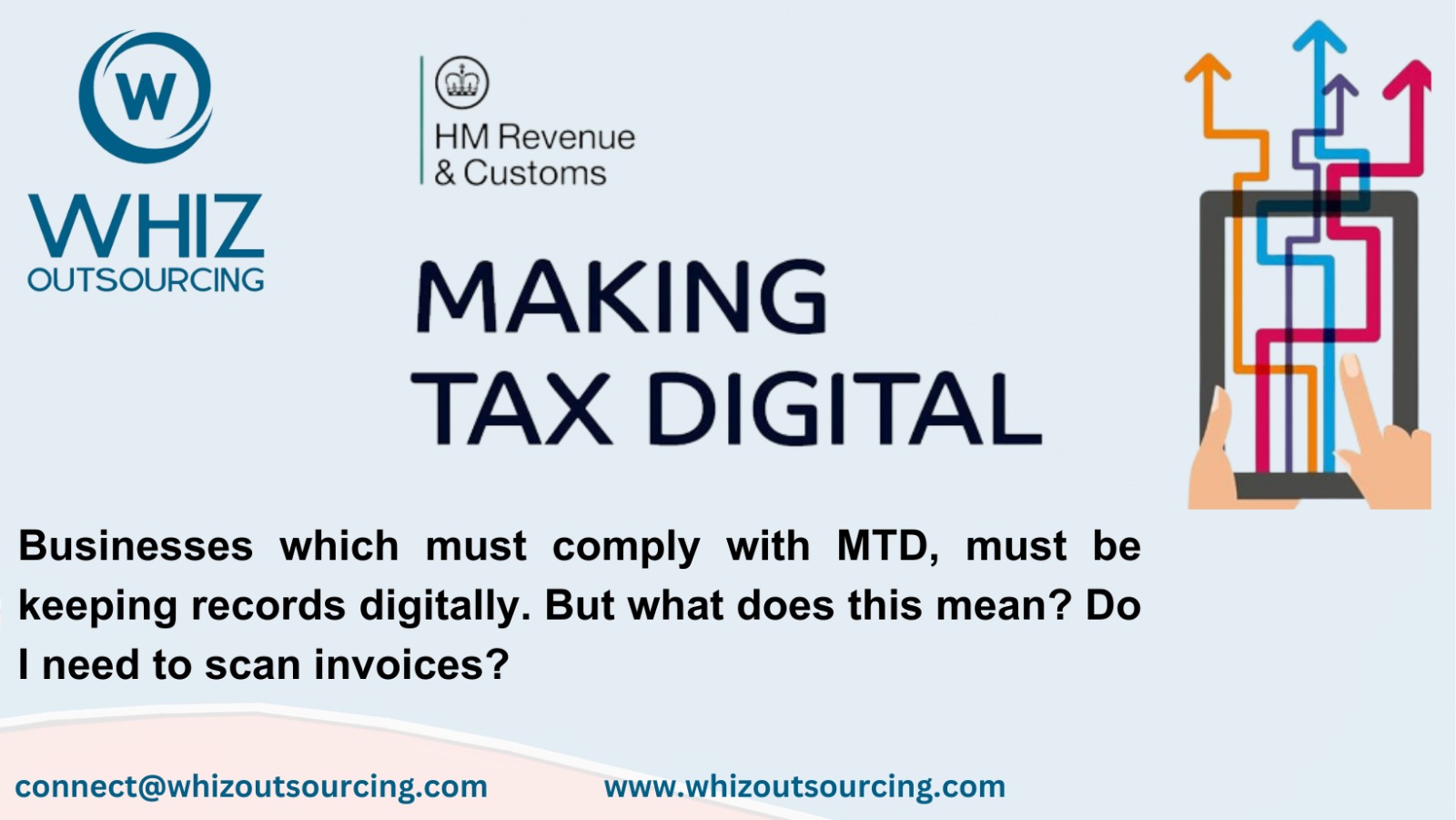
Businesses which must comply with MTD, must be keeping records digitally. But what does this mean? Do I need to scan invoices?
MTD Keeping records digitally versus manual records
HMRC believe that records maintained manually and not digitally contain more errors. As a result, this causes HMRC a loss in tax Revenue. HMRC believe that the changeover to digital records will reduce the errors filed and therefore increase the tax collected.
Businesses who currently don’t have any software therefore must change how they maintain their records. For example, paper ledgers, journal books, simplex d book and all other pen & paper records are not MTD VAT compliant.
What is required?
You must keep 3 types of data digitally. These are:
- Designatory data (i.e Your company information)
- Supplies made (i.e Your sales invoices)
- Supplies received (i.e Your purchase invoices)
Designatory data
You must have a digital record of your business name, address, VAT registration number and accounting scheme (i.e typically invoice or cash accounting scheme).
This data is often entered into your software on installation.
Supplies made (sales invoices)
You must have a digital record of your sales invoices. This includes:
- Date of the supply i.e The Tax point date
- The value of the supply i.e The Net value excluding VAT
- The rate of VAT charged
NOTE: The third requirement is the rate of VAT to charge and not the amount of output VAT. Therefore, if you maintain your records in excel or a spreadsheet ensure that you state the net amount and a %VAT rate.
A sales invoice which has several items listed but at the same VAT rate can be recorded as a single digital transaction.
However, if you raise a sales invoice which includes different rates of VAT, then you must record the total values for each VAT rate. For example an invoice with several Standard rated and several Zero rated items would be shown as a minimum of 2 digital transactions – a total of Standard rated sales and a separate total for Zero rated sales.
Supplies received (purchase invoices)
You must have a digital record of your purchase invoices. This includes:
- Date of supply ie The Tax point date
- The value of the supply. i.e The Net value excluding VAT/li>
- The amount of input tax being reclaimed
NOTE: The third requirement is different to that required for sales. This therefore must be written as an amount and not the rate of VAT.
There is therefore no requirement to split inputs by VAT rate. Should a purchase invoice contain standard rated and zero rated, the totals could be entered as a single digital transaction.
Exceptions
The above rules for keeping records digitally only apply to items which appear on the VAT returns.
For example businesses on the flat rate scheme only include sales and capital purchases on their VAT returns. Therefore they do not need to keep a digital record of all their purchase invoices, just the capital purchases.
MTD keeping records digitally and scanning invoices
Businesses have in some cases assumed that you must keep a scan of the invoice to be MTD compliant.
This is incorrect. The information contained on the invoice must be kept digitally but this could be just entered onto an excel spreadsheet.
We have wrote more on MTD and Excel on a separate blog
Retain paper copies of invoices?
The requirement to retain invoices has not changed. As a result, they must still be kept for a minimum of 6 years.
They can be retained in their original paper format. However they can also be scanned and stored digitally. Either is therefore acceptable to HMRC.
 UK
UK
 USA
USA
